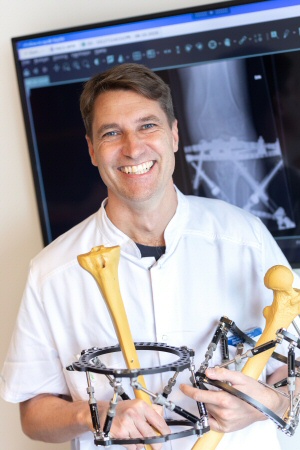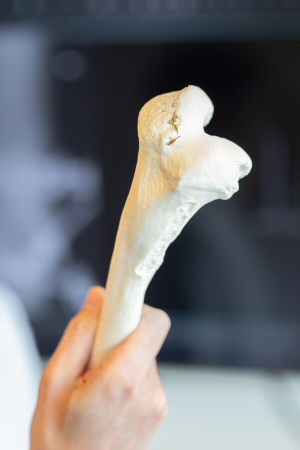Can electrical conduction replace X-rays to monitor fracture healing?
This is the vision behind a new research project between researchers from Department of Orthopaedics, Aalborg University Hospital and (a team of) engineers from Aalborg University in Denmark.
Professor Søren Kold, Department of Orthopaedics explains: Today, we monitor the healing of a fractured bone with X-rays, which is actually not an optimal solution as you only detect problems in the healing process too late in order to make minor adjustments. Moreover, every time an X-ray is taken, the patient is exposed to a small dose of harmful radiation.
Søren Kold hopes that implanting wireless sensors on each side of the fracture will provide clinicians with a new and better way to monitor bone healing.
- An animal pilot study has shown that we are able to detect deviations in the bone healing by measuring the electrical resistance between the sensors. In this way, we can detect different types of cartilage structures at the fracture site, which provides us with information on the bone healing process, says Søren Kold.
Patients can avoid reoperations
Some fractures never heal properly and may result in chronic pain or reduced functional capacity. According to the professor, this is a major problem because we cannot predict which fractures will be problematic. He also explains that improved monitoring of bone healing will result in optimised and individualised rehabilitation making it possible to adjust the training and physical activity according to the bone healing in each individual patient.
This new method is not yet ready to be tested in humans, but Søren Kold believes the method has a great potential.
This new approach will also be beneficial from a socio-economic point of view, as the number of follow-up visits and complicated reoperations can be reduced. At the same time, individualised rehabilitation is crucial to a positive patient outcome.
Currently, researchers are still conducting animal experiments before possibly applying the method to humans in the future.




